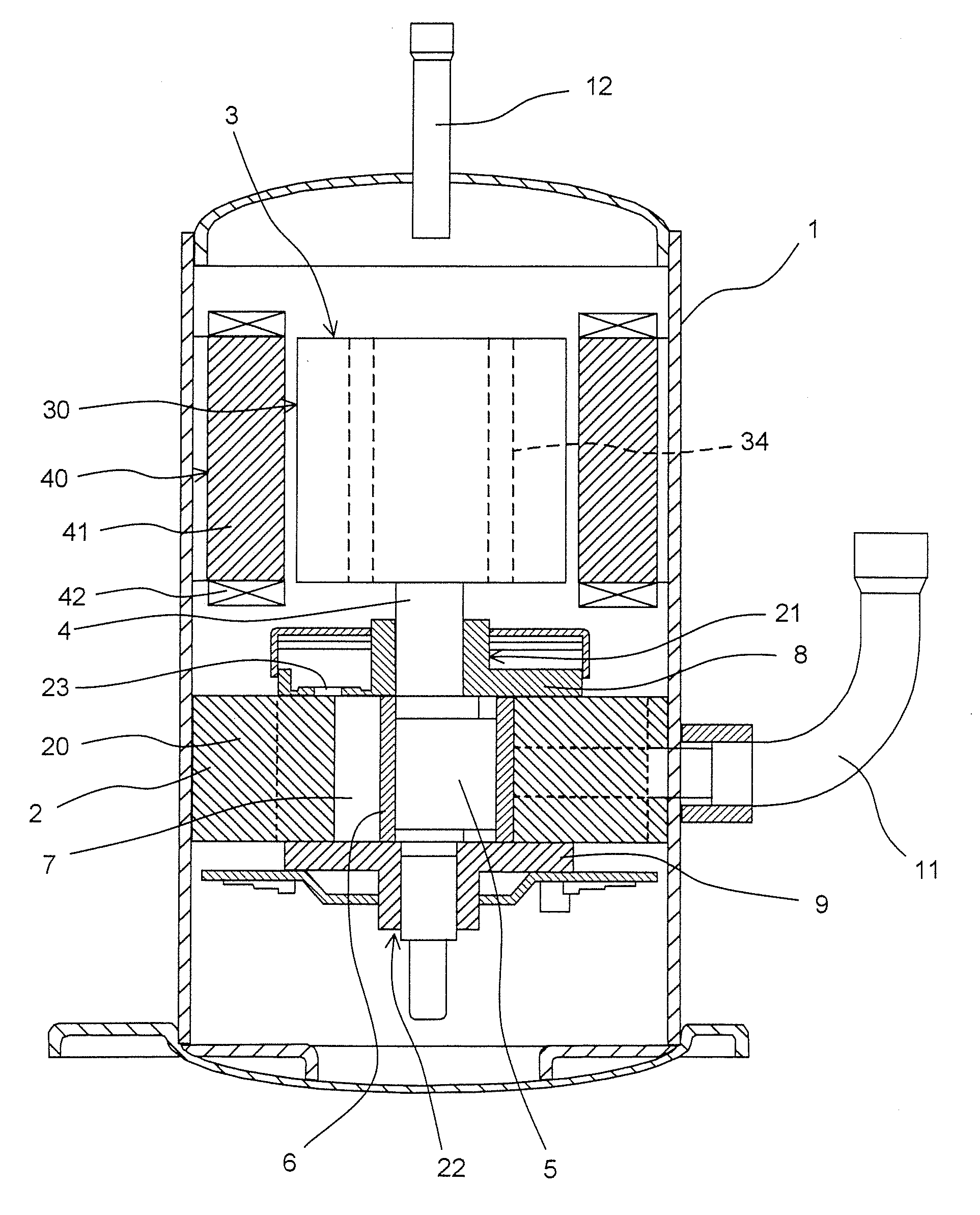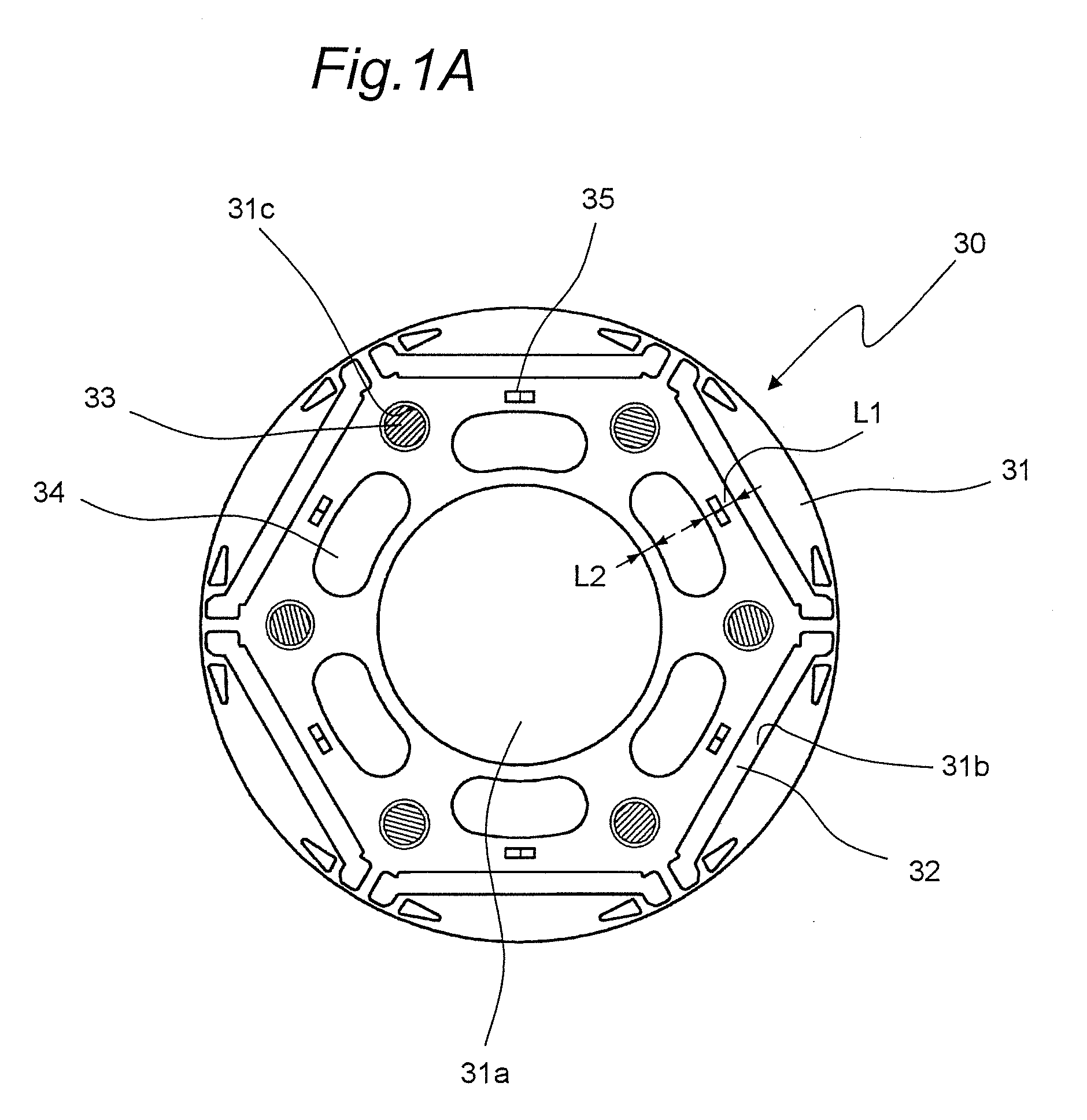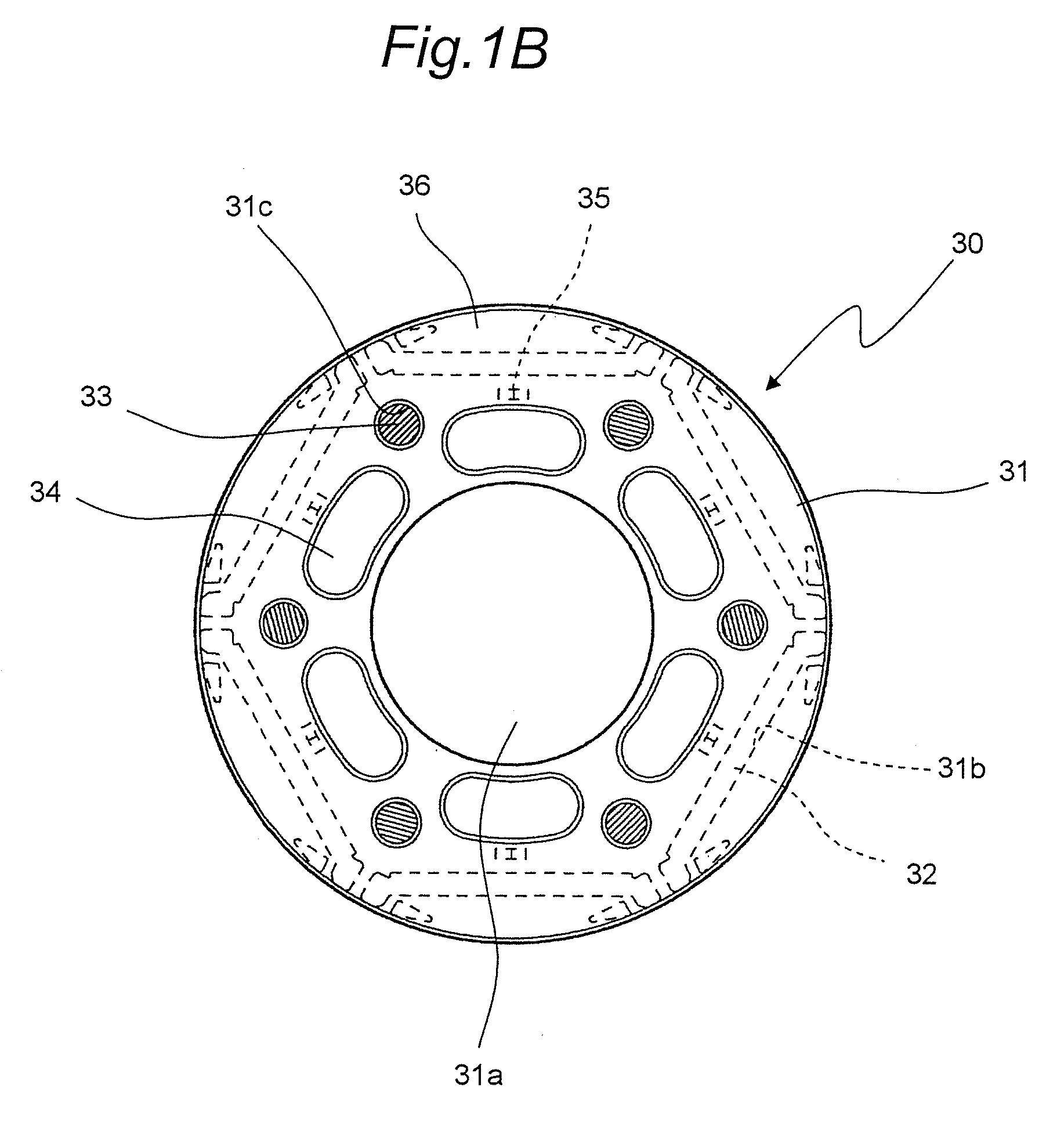Motor and compressor
- Summary
- Abstract
- Description
- Claims
- Application Information
AI Technical Summary
Benefits of technology
Problems solved by technology
Method used
Image
Examples
first embodiment
[0035]FIG. 1A shows a top view of a rotor 30 of a motor according to a first embodiment of the invention.
[0036]The rotor 30 of this motor, as shown in FIG. 1A, includes: a rotor core 31 formed of layered electromagnetic steel sheets; six permanent magnets 32 which are embedded respectively in embedding holes 31b formed through the rotor core 31 along an axial direction and which are placed in a generally regular hexagonal shape along a circumferential direction; six holes 31c which are provided near and radially inside vertices of the regular hexagon formed by the permanent magnets 32 of the rotor core 31 and which are formed through the rotor core 31 in the axial direction; rivets 33 as an example of tightening members which are inserted through the six holes 31c, respectively, to tighten the rotor core 31; and through holes 34 as an example of fluid passages which are provided between the rivets 33 of the rotor core 31 so as to be formed through the rotor core 31 in the axial dire...
second embodiment
[0049]FIG. 3 shows a top view of a rotor 130 of a motor according to a second embodiment of the invention. The rotor 130 of the motor in this second embodiment is similar, except rivets, to the rotor 30 of the motor of the first embodiment. Therefore, like components are designated by like reference numerals and their description is omitted.
[0050]In the rotor 130 of this motor, as shown in FIG. 3, rivets 33 as an example of tightening members are inserted through every other one out of six holes 31c. The rotor core 31 is tightened by three rivets 33 with layered steel sheets of the rotor core 31 sandwiched from axial both sides by using the end plates 36. Then, the remaining three holes 31c with no rivets 33 inserted therethrough are utilized as fluid passages. It is to be noted that the holes 31c for the rivets 33, if too small, would make it impossible to insert the rivets 33 therethrough, and if too large, would cause decrease in frictional force at end portions of the rivets 33,...
third embodiment
[0052]FIG. 4 shows a top view of a rotor 230 of a motor according to a third embodiment of the invention. The rotor 230 of the motor in this third embodiment is similar, except rivets and end plates, to the rotor 30 of the motor of the first embodiment. Therefore, like components are designated by like reference numerals and their description is omitted.
[0053]In the rotor 230 of this motor, as shown in FIG.
[0054]3, rivets 33 as an example of tightening members are inserted through every other one out of six holes 31c. The rotor core 31 is tightened by three rivets 33 with layered steel sheets of the rotor core 31 sandwiched from axial both sides by using end plates 37. Then, the remaining three holes 31c with no rivets 33 inserted therethrough are blocked by the end plates 37. It is to be noted that the holes 31c for the rivets 33, if too small, would make it impossible to insert the rivets 33 therethrough, and if too large, would cause decreases in frictional force at end portions ...
PUM
 Login to View More
Login to View More Abstract
Description
Claims
Application Information
 Login to View More
Login to View More - R&D
- Intellectual Property
- Life Sciences
- Materials
- Tech Scout
- Unparalleled Data Quality
- Higher Quality Content
- 60% Fewer Hallucinations
Browse by: Latest US Patents, China's latest patents, Technical Efficacy Thesaurus, Application Domain, Technology Topic, Popular Technical Reports.
© 2025 PatSnap. All rights reserved.Legal|Privacy policy|Modern Slavery Act Transparency Statement|Sitemap|About US| Contact US: help@patsnap.com



